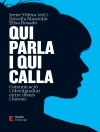To The Lighthouse Virginia Woolf – ‘To the Lighthouse’ is a 1927 novel by Virginia Woolf and it is considered one of her best. In 1998, the Modern Library named ‘To the Lighthouse’ No. 15 on its list of the 100 best English-language novels of the 20th century.The serene and maternal Mrs. Ramsay, the tragic yet absurd Mr. Ramsay, and their children and assorted guests are on holiday on the Isle of Skye. From the seemingly trivial postponement of a visit to a nearby lighthouse, Woolf constructs a remarkable, moving examination of the complex tensions and allegiances of family life and the conflict between men and women.As time winds its way through their lives, the Ramsays face, alone and simultaneously, the greatest of human challenges and its greatest triumph – the human capacity for change.Following and extending the tradition of modernist novelists like Marcel Proust and James Joyce, the plot of ‘To the Lighthouse’ is secondary to its philosophical introspection. Cited as a key example of the literary technique of multiple focalization, the novel includes little dialogue and almost no direct action; most of it is written as thoughts and observations.
About the author
Adeline Virginia Woolf (/wlf née Stephen; 25 January 1882 28 March 1941) was an English writer, considered one of the most important modernist 20th-century authors and also a pioneer in the use of stream of consciousness as a narrative device.Woolf was born into an affluent household in South Kensington, London, the seventh child in a blended family of eight which included the modernist painter Vanessa Bell. Her mother was Julia Prinsep Jackson and her father Leslie Stephen. While the boys in the family received college educations, the girls were home-schooled in English classics and Victorian literature. An important influence in Virginia Woolf’s early life was the summer home the family used in St Ives, Cornwall, where she first saw the Godrevy Lighthouse, which was to become central to her novel To the Lighthouse (1927).












